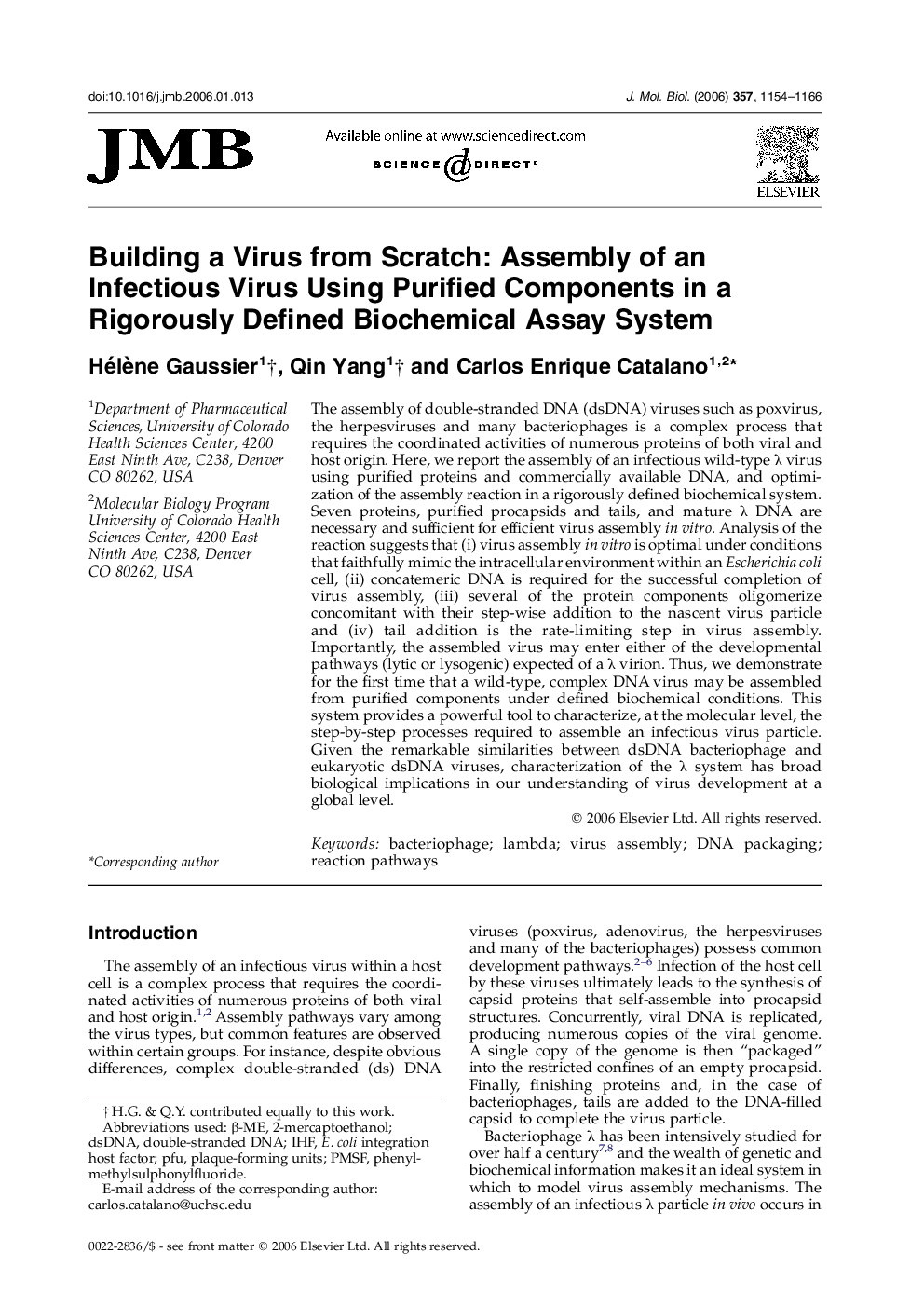| Article ID | Journal | Published Year | Pages | File Type |
|---|---|---|---|---|
| 2189941 | Journal of Molecular Biology | 2006 | 13 Pages |
The assembly of double-stranded DNA (dsDNA) viruses such as poxvirus, the herpesviruses and many bacteriophages is a complex process that requires the coordinated activities of numerous proteins of both viral and host origin. Here, we report the assembly of an infectious wild-type λ virus using purified proteins and commercially available DNA, and optimization of the assembly reaction in a rigorously defined biochemical system. Seven proteins, purified procapsids and tails, and mature λ DNA are necessary and sufficient for efficient virus assembly in vitro. Analysis of the reaction suggests that (i) virus assembly in vitro is optimal under conditions that faithfully mimic the intracellular environment within an Escherichia coli cell, (ii) concatemeric DNA is required for the successful completion of virus assembly, (iii) several of the protein components oligomerize concomitant with their step-wise addition to the nascent virus particle and (iv) tail addition is the rate-limiting step in virus assembly. Importantly, the assembled virus may enter either of the developmental pathways (lytic or lysogenic) expected of a λ virion. Thus, we demonstrate for the first time that a wild-type, complex DNA virus may be assembled from purified components under defined biochemical conditions. This system provides a powerful tool to characterize, at the molecular level, the step-by-step processes required to assemble an infectious virus particle. Given the remarkable similarities between dsDNA bacteriophage and eukaryotic dsDNA viruses, characterization of the λ system has broad biological implications in our understanding of virus development at a global level.
